






Dog ears in plastic surgery are small folds of excess skin that can appear near surgical sites. They commonly form after surgeries like tummy tucks and breast reductions. While not harmful, they can be bothersome and affect the surgery’s final look. This article explains what causes dog ears and how they can be managed or treated.
Dog ear deformities are characterized by minor bunches of surplus skin, often manifesting as crumpled tissue near surgical incisions. These small protrusions are frequent following surgeries such as abdominoplasties (tummy tucks), breast lifts and reductions, mastectomies, or procedures related to significant weight reduction. For individuals undergoing surgery, dog ears may result in both aesthetic dissatisfaction and physical discomfort due to the development of a cutaneous dog ear anomaly.
Imagine enduring major surgery with the anticipation of a seamless finish only to be faced with stubborn excess folds. The presence of remaining extra skin after considerable fat loss or particular operative methods can lead to the emergence of this condition. Grasping what constitutes a dog ear is fundamental for its treatment and prophylaxis.
The aim of plastic surgery should be enhancing one’s self-esteem and comfort within their own body. The persistence of dog ears might impede achieving such an outcome post-surgery. They could interfere with how garments sit on your body or induce irritation by rubbing against each other. Being informed about what leads to these unwelcome growths equips you better when discussing prevention strategies and possible treatments alongside your surgeon.
Dog ears may occur due to a variety of reasons such as the elasticity of the patient’s skin, how long and what shape the surgical incision is, along with factors related to the healing process.
By looking into these factors, we gain insight into why dog ears form and learn about measures that can be implemented to avoid their development.
The capacity of an individual’s skin to stretch and return to its original shape, known as skin elasticity, is strongly impacted by both age and genetics. This attribute directly influences the likelihood of forming dog ears post-surgery. When skin with poor elasticity fails to retract adequately following a procedure, excess skin may accumulate at the ends of incisions.
Consider how some rubber bands rebound quickly once stretched while others remain loose or distort in shape. This analogy mirrors how loose skin with compromised quality or additional tissue responds after surgical interventions.
To minimize the occurrence of dog ears, preserving good quality in one’s skin is beneficial.
Minimizing the risk of dog ear formation relies heavily on the correct length and contour of the surgical incision. Opting for longer or curved cuts may aid in dispersing skin more uniformly, thereby reducing undesirable protrusions. Yet, how much tension is exerted when stitching and the specific approach utilized to seal an incision are also critical components that influence both how well the skin heals and its propensity to develop dog ears.
Take drawing on fabric as an example: a straight line versus a curve will cause different pulling effects due to their distinct shapes. The situation with double incision top surgery is comparable. It’s essential that surgeons use precise techniques to ensure proper skin healing without creating unnecessary tension at the site of closure, which can lead to unwanted complications such as dog ears.
During the initial phase of recovery after surgery, swelling and alterations in body shape can affect how skin accumulates at the ends of an incision, which may result in the formation of dog ears. Sometimes what looks like dog ears might be a temporary condition caused by swelling and changes during healing.
Activity levels following surgery are also influential. Heightened physical activity could cause stress on recovering incisions, possibly impacting both the healing process and contributing to the development of dog ear formations. It is essential to carefully control activities post-surgery and keep a close watch on any swelling to reduce these risks effectively.
It is crucial to prioritize prevention over treatment regarding dog ear formation. Careful surgical design plays a vital role in lessening the likelihood of developing dog ears post-operatively. Key considerations include maintaining an appropriate ratio between incision length and width, ensuring side lengths are not disproportionate, and strategically placing sutures. Following natural lines with curved or oblique incisions also contributes significantly to preventing this issue.
To diminish the potential for dog ears, surgeons can employ methods such as circular excisions or liposuction around underarm areas during procedures. Opting for excision patterns that generate minimal skin redundancy—like rhomboid designs—can be beneficial as well. These approaches should be coupled with vigilant care after surgery to foster optimal outcomes in avoiding dog ears.
Adherence to thorough post-operative guidelines aids in proper healing processes while curtailing the chances of a dog ear forming at the site of an incision. Addressing swelling meticulously and following all prescribed aftercare steps play indispensable roles in minimizing this risk post-surgery. Frequent follow-up examinations ensure recovery proceeds smoothly and any arising issues—like possible complications related to dog ears—are promptly managed.
If dog ears occur despite taking steps to prevent them, various methods are available for addressing and treating this issue. These strategies include less invasive techniques such as massage therapy and compression garments and more direct interventions like surgical removal through dog ear excision.
We will delve deeper into these available choices now.
Massage therapy can serve as an effective non-surgical method for managing conditions related to dog ears. This therapeutic approach assists in the redistribution of skin and enhances blood circulation, potentially improving the aesthetic concerns associated with dog ears. Yet, it is vital to initiate massage therapy solely when incisions are completely healed in order to prevent any adverse effects.
Massage gently persuades the skin to resume its proper position. Employing a variety of techniques to excise excess skin, specifically from impacted regions, can yield discernible enhancements progressively through steady usage.
Compression garments are beneficial in sculpting the region surrounding dog ears, improving the aesthetic result after surgery. By exerting steady pressure, these garments help minimize swelling and support the skin during recovery.
For more persistent cases, dog ear excision is a minor surgical procedure that aims to remove excess skin and fat to achieve a smoother contour. This procedure is typically performed under local anesthesia, which allows for a quicker recovery and a less invasive experience for the patient.
Several techniques can be used for dog ear excision, such as the straight line extension method, S-plasty, M-plasty, and advanced flap techniques.
Post-operative monitoring is crucial. It is recommended that dog ear removal be considered at least six months after the initial surgery.
Sometimes, individuals may require revision surgery to correct dog ears if they are unsatisfied with the outcome of their initial operation. Patients often opt for dog ear revision procedures after observing the results for 6 to 9 months after the surgery.
Dog ear revisions are typically simple operations performed under local anesthesia. If necessary, corrections can be made immediately while patients remain anesthetized following their primary procedure. Nevertheless, patients must consider how they feel about undergoing another surgical procedure and account for any additional recovery that might be needed.
Surgeons' fees may often be waived for dog ear revision surgeries within one year of the first surgery. However, expenses linked to facility usage and services provided by anesthesiologists still apply and are not exempt from charges.
The presence of dog ears can compromise the surgery’s ultimate cosmetic outcome, influencing both the overall appearance and sense of comfort. Patients with a higher BMI may experience lateral breast dog ears that result in irritation and unease due to friction, which is exacerbated when wearing specific kinds of apparel or engaging in exercise.
Dog ears have the potential to create dysphoria or discomfort as they rub against the arms. Tackling these issues goes beyond mere visual appeal. It involves improving patients’ general well-being and day-to-day comfort.
Dog ears are common in plastic surgery, but understanding their causes, prevention, and treatment can help you manage them effectively. From meticulous surgical planning to diligent postoperative care, there are several strategies to minimize the risk of dog ears. When they do occur, non-invasive treatments like massage therapy and compression garments or surgical options like dog ear excision can help correct the issue.
Remember, achieving the best possible aesthetic results and comfort is a collaborative effort between you and your plastic surgeon. Don’t hesitate to discuss your concerns and explore all available options to ensure you feel confident and comfortable in your skin.
Get a one on one consultation with Dr. Z in his beautiful practice in Miami, FL
7540 SW 61 Ave, South Miami, FL 33143





